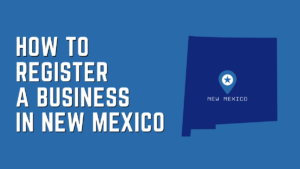Once you learn how to start a nonprofit organization, you’ll realize it’s similar to starting any type of business. It takes dedication, patience, and a trustworthy team. Our systematic approach to starting a nonprofit will maximize your chance of success. We understand that starting a nonprofit is a philanthropic act, and we applaud your initiative.
How to Start a Nonprofit in 7 Steps
A nonprofit organization is a type of business that operates without the intention of making profits for its owners or investors. Instead, nonprofit organizations focus on advancing a social cause or serving the community.
Due to their virtuous missions, most nonprofit organizations are exempt from federal income taxes and some state taxes. 501c3 nonprofits are the most common type of nonprofits and there are 1.4 million active 501c3 charities in the United States. Furthermore, donors can claim tax deductions for donations to 501c3 organizations.
Step 1: Define the Purpose of Your Nonprofit Organization
As we just mentioned, there are over one million active nonprofit organizations in the United States alone. This means there are likely other nonprofit organizations doing similar work to what you plan on doing with your nonprofit. You can use the National Council of Nonprofits locator tool to find similar organizations.
If your nonprofit organization can’t differentiate itself, it may be hard to secure funding and donations. The first step in starting a nonprofit is to define the purpose of your nonprofit organization and choose the cause you want to support. Then, find proof that your nonprofit fills an unmet need within your community.
Attracting financial support is much easier when you have strong numbers to back up your purpose and idea. To help define the purpose of your nonprofit, follow these steps:
- Think about the intended audience you want to serve
- Brainstorm your intended solution and the potential value you’ll provide
- Research nonprofit organizations that already serve the same demographic and need
- Consider alternative solutions such as joining an existing nonprofit, donating to an established nonprofit, or becoming a consultant
- Make sure that starting a registered nonprofit is the best way to serve your mission
- Double-check that you will be adding value and creating a unique solution to a specific problem
Once you define your nonprofit’s purpose and are completely sure you want to proceed, you can move on to step two.
Step 2: Build Your Nonprofit’s Foundational Values
The next step is to build a sturdy foundation for your nonprofit with defined values and guidelines. A clear mission statement and plan will ensure your organization is well-run and cohesive.
These steps involve:
- Choosing a name for your nonprofit organization
- Identify and state the need or problem
- Formulate and state a solution to that need or problem
- Define a target audience and population
- Determine your nonprofit’s vision, mission, and values
Naming Your Nonprofit Organization
At the start, you’ll need to choose a name for your nonprofit. This name should relate to your nonprofit’s main activities and goals. Your nonprofit’s name will act as its primary form of branding and will influence the tone of your organization for many years to come.
We recommend brainstorming a list of names with your team, friends, or acquaintances. Then, narrow down your list to those that inspire you or are memorable. As you’re thinking of names, remember what your nonprofit stands for and the problem you’re trying to solve. Furthermore, ensure that your nonprofit’s name is easy to remember and say.
It’s also a good idea to check that the name isn’t already taken and to see if the web domain is available for domain name registration. Your state may require that your nonprofit has a corporate designator, such as Corporation, Incorporated, or Company (Corp., Inc., and Co., respectively). Check with your state’s incorporation page to see the requirements.
Create a Defining Mission Statement
After finalizing your nonprofit’s name, you’ll need to create an everlasting mission statement. Your mission statement will clarify your nonprofit’s purpose and is used to motivate your staff and volunteers.
A well-written and clear mission statement sends a powerful message about what your organization stands for and what you aim to achieve. Make sure it’s unambiguous, concise, and easy to understand. You should also gather feedback on your initial mission statement and continue modifying it based on everyone’s input.
Avoid using buzzwords, use simple language, and don’t write it as a marketing tagline. Instead, a defining mission statement should help your nonprofit organization attract the right donors and staff.
Step 3: Create a Comprehensive Business Plan
Creating a comprehensive business plan is essential to ensure your nonprofit organization is prepared and well-equipped to operate for the years to come.
This business plan acts as a blueprint for how your nonprofit will operate, what staff responsibilities will be, and how your nonprofit will achieve its mission. First, let’s discuss the main pieces of a well-defined business plan.
1. Executive Summary
The executive summary describes your nonprofit organization’s purpose and mission. It also summarizes your market analysis and proves an identifiable need within your community. Then, you will explain how your nonprofit will meet that need and provide a solution.
2. Programs, Products, and Services
This section provides an in-depth description of the products, programs, and/or services your nonprofit will provide. Describe who the beneficiaries are, what your goals are, and how you plan on achieving them.
3. Marketing Plan
Explain the current trends in your nonprofit’s niche and how you will advertise your nonprofit’s services. Describe the plan on getting your message out while being specific and explaining the exact marketing channels you plan to use.
4. Operating Plan
Define your nonprofit’s organizational structure and what happens in the day-to-day operations. Describe the different roles throughout the organization and what each role aims to achieve.
5. Impact Plan
Explain the exact change you wish to create in the world. What are the specific objectives you aim to accomplish, and how will you measure your progress?
6. Financial Plan
Your nonprofit organization will succeed or fail based on your financial planning and framework. So, define your financial status and write up a budget. Furthermore, discuss the confirmed income you will receive, potential revenue streams, how much money you need to start, and how much money you need to operate.
7. Bylaws
Your organization’s bylaws describe the operating rules and provide a framework for management procedures. These are your tools of internal accountability and outline the inner workings of your organization. Bylaws are also required in order to obtain tax-exempt status from the IRS.
The bylaws contain the procedures and rules for activities such as electing directors, holding meetings, appointing officers, and other formalities.
Step 4: Choose Your Board of Directors
Responsible and genuine people are essential to running a successful nonprofit. It would be best to find partners who share the same passion for your mission. Building a robust leadership team in your board of directors is the best way to ensure the longevity of your nonprofit organization.
Your board of directors is responsible for strategic decision making, regulatory compliance, making hires, and supporting day-to-day operations. A well-equipped board of directors will consist of individuals with expertise and resources in different areas.
The board of directors should be evenly split between:
- Individuals who have expertise in marketing, finances, and legal matters
- Individuals who are connected to your target demographic and have expertise in your service field
- Individuals who are comfortable asking their networks for donations
In addition to your nonprofit’s directors, you’ll also need staff and potential volunteers.
Staff Members
You also need to decide if you want to hire staff yourself or leave it to your board of directors. Either way, some essential staff roles include the Communications Manager, Fundraising Manager, Membership Manager, and Events Manager.
Unlike directors, staff members are typically salaried, so it’s important to create a defined job description and requirements list for each role. The exact roles you choose to hire also depend on your nonprofit’s organizational plan and structure.
Volunteers
Most nonprofits rely on volunteers to run their operations. So it’s important to create volunteer guidelines that determine:
- How many volunteers your nonprofit will need
- How much time do you expect volunteers to help on a weekly basis
- If your volunteers need specific skill sets
- If you’re going to train volunteers
Step 5: Incorporate Your Nonprofit Organization
Since you’ve already chosen your nonprofit’s name and board of directors members, completing the incorporation paperwork is straightforward. In your incorporation paperwork, you will declare your organization’s name, purpose, location, and initial board of directors.
Furthermore, you must file your Articles of Incorporation with your state’s corporate filing office. We recommend incorporating your nonprofit in the state where your organization will operate.
The exact filing and fees differ from state to state, and incorporating a nonprofit doesn’t automatically make it 501c3 tax-exempt. You’ll need to include specific language in your Articles of Incorporation that state your intentions of applying for federal tax-exempt status.
Once you finish the paperwork, you can send it to your state filing office. Some states require electronic filing, while others ask for copies sent via mail.
While you’re waiting for the state to approve your Articles of Incorporation, you should obtain a federal employer identification number (EIN). An EIN is used to track your organization’s financial activity and allows you to open a business bank account and hire paid staff. Furthermore, every major transaction your nonprofit makes requires an EIN.
Use a Business Registration Service
Starting a nonprofit organization can be tricky and confusing if you haven’t had any experience before. This is why we recommend using legal help services that can help you incorporate your nonprofit organization and file for federal tax-exempt status.
Our favorite legal services are Incfile, Legalzoom, and Rocket Lawyer because they have dedicated packages for starting nonprofit organizations. These business registration services will ensure your Articles of Incorporation are filed properly and that you have everything needed to file your tax-exempt request forms.
Step 6: File for Federal Tax-Exempt Status
After your Articles of Incorporation are approved, the next step is to file for 501c3 tax-exempt status with the Internal Revenue Service (IRS). This involves filing IRS Form 1023.
We recommend filing your Form 1023 within 27 months of the date you file your nonprofit Articles of Incorporation. Form 1023 is up to 28 pages long and can take 3 to 12 months for the IRS to return its decision.
The form is essentially an audit of your proposed activity and a comprehensive examination of your nonprofit organization’s purpose, planned programs, and governing structure. The IRS will check if your organization is being formed for 501c3 purposes. It’s also looking for potential conflicts of interest.
But before you file your Form 1023, you must have:
- Filed your Articles of Incorporation
- Prepared your bylaws
- Held your first nonprofit organization meeting
The IRS will ask for a thorough description of your nonprofit, most of which you already covered in your business plan. As such, it may be relatively easy to fill out Form 1023.
However, there is also a Form 1023-EZ that is the condensed version of Form 1023. The Form 1023-EZ can be used by organizations with gross receipts of less than $50,000 and less than $250,000 in assets. Check the IRS website to see if you’re eligible.
Once you receive 501c3 status from the IRS, there is no expiration date. This means your nonprofit will hold its 501c3 status as long as it exists. However, the IRS can revoke the status if it finds you don’t legally comply with its requirements.
Step 7: Secure Startup Funding
Once your organization is officially incorporated, and the IRS approves your 501c3 status, you can start securing funding for your nonprofit organization. Securing funding is the most challenging part of learning how to start a nonprofit but also the most important.
A nonprofit organization with weak funding is unlikely to sustain itself long enough to further its social cause.
Grants
The best way to secure early funding for your nonprofit is by applying for grants. Grants are usually given to nonprofit organizations with a distinct purpose or program.
It’s essential to find grant programs that align with your mission statement. Furthermore, we recommend researching a variety of different grants and applying to only the ones you meet the requirements.
Writing a grant proposal is time-consuming, so you must choose the grant programs which you can see your nonprofit organization building a relationship with.
Fundraising
Nonprofit organization fundraising consists of soliciting donations from corporate sponsors, and individual donors, and organizing fundraising events. In terms of receiving donations, online giving is growing in popularity because of how convenient it is.
Donors to your 501c3 nonprofit organization can receive tax deductions on their donations, so it’s important to let them know this detail.
Best Nonprofit Formation Services
Starting a nonprofit organization on your own is time-consuming and complex. We recommend using a nonprofit formation service to ensure the entire process is smooth and error-free.
Here are our three favorite nonprofit formation service providers.
IncFile is a company formation service that has a wealth of experience forming nonprofit organizations. Apart from being one of the best LLC services, IncFile offers three different nonprofit creation packages depending on how much help you want. Its services are affordable and effective, and we highly recommend creating your nonprofit with IncFile.
- Affordable packages
- EIN tax number and IRS Form 2553 assistance
- Unlimited phone and email support
- Expedited filing on top package only
- Business banking account on top package only
LegalZoom is a widely used online business formation and legal help services company. Similar to IncFile, LegalZoom has three different pricing packages and offers complete assistance in creating a nonprofit organization. LegalZoom has helped create over 100,000 nonprofits. Read the complete LegalZoom review to find more about it.
- Reputable nonprofit organization packages
- 60-day refund policy
- Ensures your nonprofit application is complete
- More expensive than other options
- Longer filing times
Rocket Lawyer is another legal services provider that can help you create a nonprofit organization with ease. Its team will help you create your bylaws, file for 501c3 status, and help you get in contact with a nonprofit attorney.
- Direct contact with lawyers
- Full refund if not satisfied with services
- Amazing customer service
- Addons for non-members can get expensive
Frequently Asked Questions (FAQs) for How to Start a Nonprofit
Let’s go over a few common questions individuals ask about how to start a nonprofit organization.
Bottom Line on How to Start a Nonprofit
The secret to how to start a nonprofit organization is to support a cause you’re truly passionate about. Your passion will lead to innovative solutions and a mission statement that many individuals can relate to.
It’s also essential to treat your nonprofit as a real business and to constantly review your business plan and financial statements. To help start your nonprofit, we recommend using a legal service such as IncFile. These services make it easy to file for 501c3 nonprofit status.
 Sections of this topic
Sections of this topic



















